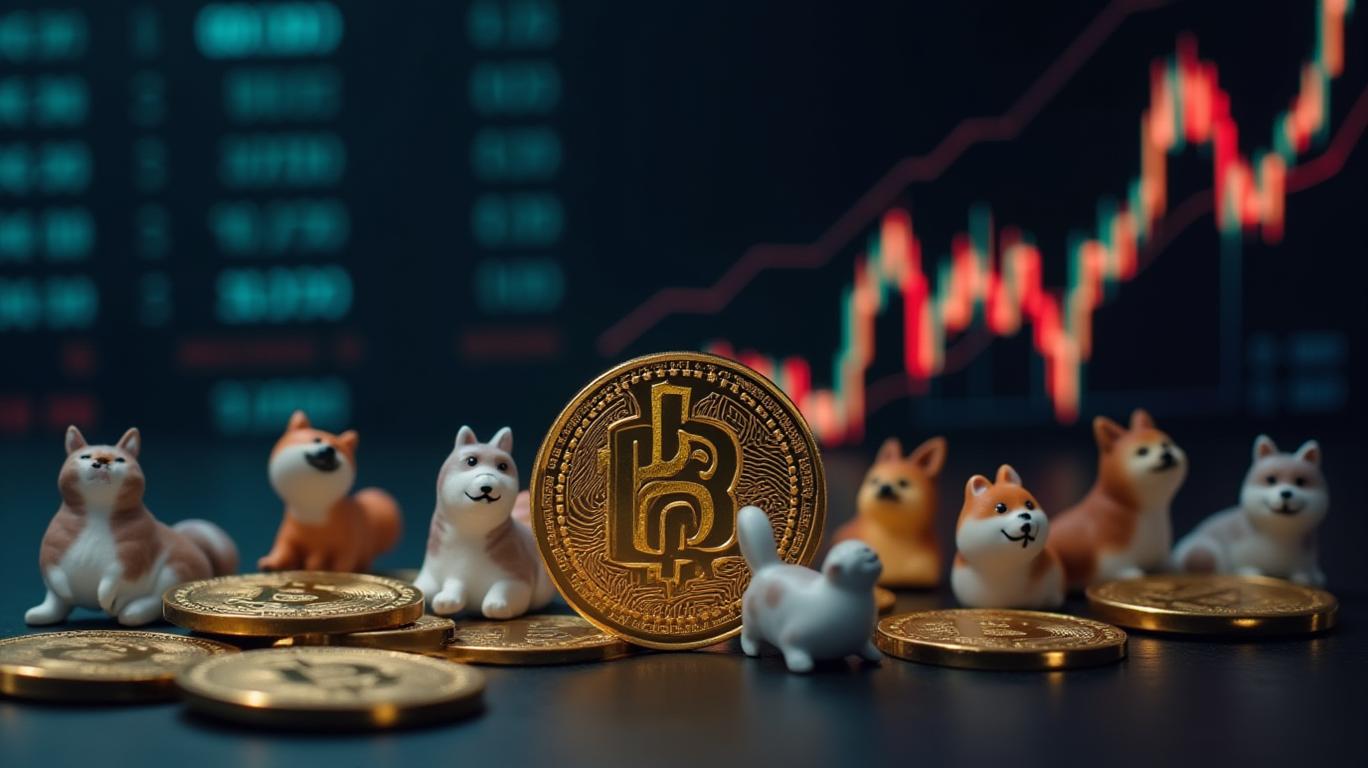Meme Coins' Structural Vulnerabilities: A Playbook for Profit in Chaos
The cryptocurrency market is a realm of extremes—where memes can mint millionaires overnight and where volatility is not just a feature but a defining characteristic. Among the most volatile are meme coins, digital assets built on humor, community fervor, and often questionable economics. Yet within this chaos lies an opportunity for investors who can decode the structural vulnerabilities baked into these tokens. Today, we dissect the supply-side risks of meme coins and outline strategies to turn their fragility into profit.

The Meme Coin Supply Crisis: Infinite Risk, Finite Value
Meme coins are defined by their supply structures, which often prioritize accessibility over economic stability. Take Dogecoin (DOGE), the original meme coin. With no maximum supply, DOGE operates on an inflationary model akin to fiat currency, where block rewards remain unchanged—a deliberate design choice that keeps transaction fees low but risks diluting value over time. This infinite supply creates a ticking time bomb: as more DOGE enters circulation without demand growth, its value could erode steadily, making it a prime candidate for shorting during market corrections.
Similarly, Shiba Inu (SHIB)'s 1 quadrillion total supply ensures micro-transactions are feasible but introduces another layer of risk. While its deflationary "burn" mechanism reduces circulating supply, the sheer number of tokens means even small price movements require massive capital shifts—a recipe for volatility. Investors who track SHIB's burn rate and liquidity pool dynamics can anticipate swings and position accordingly.
Emission Schedules and the Liquidity Trap
Not all meme coins are created equal. Some, like SafeMoon (SFM), have grappled with poorly structured emissions and governance. SFM's 1 trillion token supply is further complicated by a 10% transaction tax, half of which is used to buy back tokens and the other half to fund liquidity pools. While this aims to stabilize price, the system's opacity and past scandals—such as a $200 million liquidity pool fraud—make it a high-risk play. Investors might avoid SFM outright but could profit by shorting it during hype cycles or deploying options contracts to capitalize on its volatility.
Others, like ShepskyAI (SEKY), offer staked rewards of 774% annually, a figure that strains credibility in a bear market. Such promises depend on sustained community engagement and liquidity—a fragile foundation. The key metric here is SEKY's liquidity pool depth; if it shrinks, the token becomes a prime candidate for a "rug pull," where developers drain funds.
Tokenomics: The Double-Edged Sword
Meme coins often rely on novel tokenomics to differentiate themselves, but these mechanisms can backfire. Bone (BONE), the governance token for Shibaswap, ties its value to the broader Shiba Inu ecosystem. This interdependence is a strength—BONE thrives when SHIB does—but also a vulnerability. A collapse in SHIB's utility would drag BONE down, creating a correlated risk that investors must hedge against.
Meanwhile, TRUMP, a coin leveraging Donald Trump's influence, has 80% of its tokens reserved for team initiatives, a stark deviation from the "fair launch" ethos of meme coins. This centralization could deter retail investors, but institutional players might see it as an advantage—TRUMP's $38 billion market cap (as of 2024) suggests demand exists for "legitimized" meme coins. Monitoring TRUMP's liquidity on major exchanges and its regulatory scrutiny is critical for positioning.
Hedging Strategies: Turning Chaos Into Profit
- Diversify, but with precision: Allocate small portions to meme coins with deflationary mechanisms (e.g., PEPE, which burns tokens) but pair them with stablecoins like USDC to dampen volatility.
- Short the inflated: Use derivatives to short overhyped coins like SFM during rallies, leveraging their structural flaws.
- Bet on the ecosystem leaders: Invest in meme coins with real-world use cases, such as Doge2014's staking rewards or Dogs ($DOGS)' dog welfare initiatives—tokens with tangible utility may outperform pure speculation plays.
- Monitor liquidity metrics: Track tokens like Bonk (BONK), which lack emission controls, but watch for sudden liquidity pool withdrawals—a sign of an impending crash.
Conclusion: Profit in the Panic
Meme coins are not just a gamble; they're a puzzle. Their supply-side risks—from infinite inflation to opaque emissions—are glaring, but they also create asymmetric opportunities. The playbook is clear: exploit overhyped tokens through shorting, anchor portfolios in stable assets, and bet on tokens with defensible tokenomics. The crypto market's next boom will reward those who turn fragility into strategy. Act now—before the next meme coin's structural flaws become its epitaph.

Comments
No comments yet